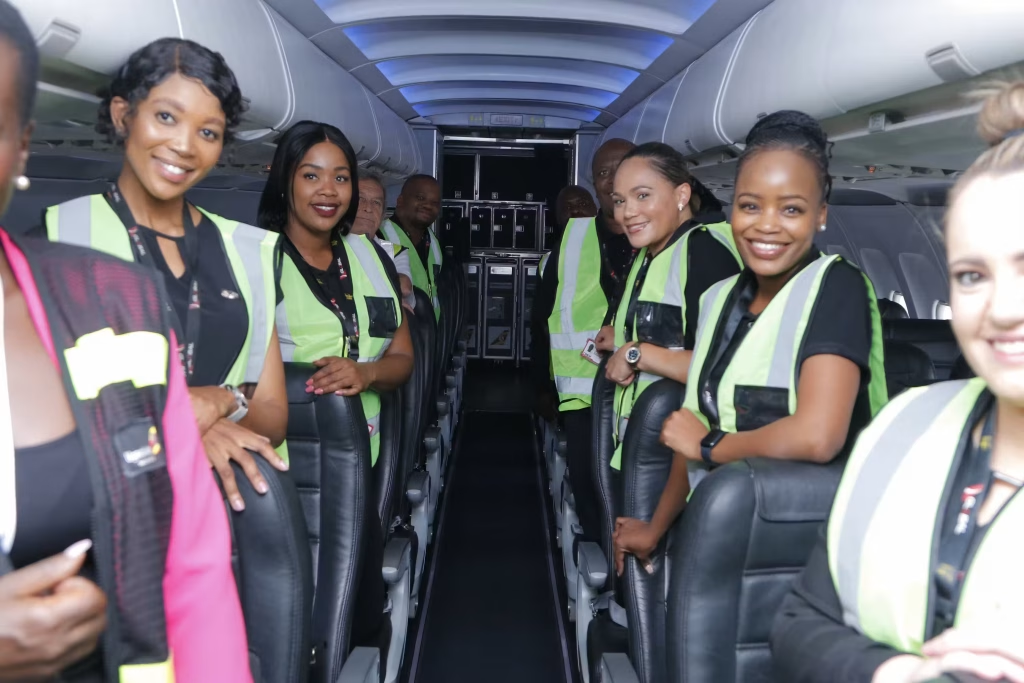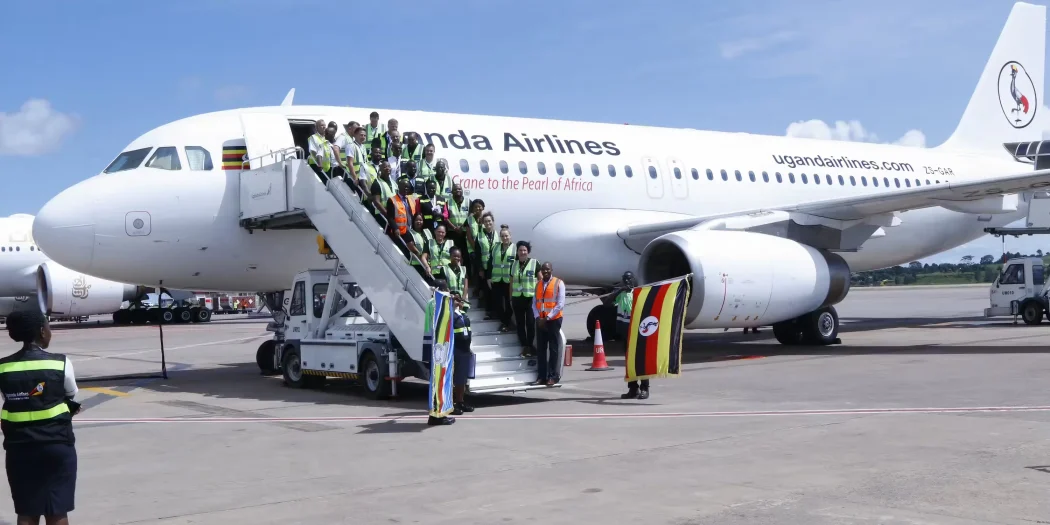Summary:
- Uganda Airlines, facing challenges typical in Africa’s aviation sector, has temporarily leased a 35-year-old A320 from South Africa’s Global Aviation to bridge the gap between its smaller CRJ900s and larger A330-800s. The A320, intended for a six-month lease, improves route performance and capacity on key routes like Kinshasa and Johannesburg, despite its age and higher leasing costs.
KAMPALA, (Examiner) – Establishing a successful airline is challenging anywhere in the world, but it is particularly difficult in Africa, a continent dotted with numerous defunct airlines and a few that manage to survive despite the odds. One such example is Uganda Airlines, a small and struggling carrier with a stark imbalance in its fleet. The airline operates four CRJ900s and two A330-800s, the latter considered a vanity project that the airline doesn’t need. Recently, the arrival of a wet-leased A320 has temporarily addressed this equipment gap.
The leased A320 is not just any standard Airbus narrowbody; it is the second-oldest active A320 in the world. Sub-Saharan airlines typically have limited choices and face higher leasing costs due to perceived higher risks. Wet leasing, which includes the aircraft, crew, maintenance, and insurance, is generally expensive and more so in Africa, making it a short-term solution for Uganda Airlines.
Uganda Airlines has leased the A320, registered as ZS-GAR, from Global Aviation in South Africa. According to ch-aviation, this aircraft is 35.1 years old and was the 53rd A320 ever built. It is second only to JY-JAC from Jordan Aviation, the 29th A320 built, still in service. The A320 has a seating configuration of 160 seats: 148 in economy and 12 in business class. However, Uganda Airlines initially reported a configuration of 138 economy and 12 business seats, a discrepancy that went unquestioned by the media. The A320 fills the size gap between the airline’s CRJ900s and A330s.
The aircraft’s history is extensive, having been delivered new to Braniff in the USA in 1989 as N902BN. It later flew for America West, US Airways, and American Airlines, all under the registration N621AW, before ending its US service in 2013. It joined Global Aviation in 2016 and most recently operated for South Africa’s Lift.

Uganda Airlines plans to operate ZS-GAR for six months. The aircraft was delivered from Johannesburg to Entebbe on May 9 and started passenger services from Entebbe to Kinshasa on May 14. As of May 16, it had only flown to Kinshasa, with Johannesburg also being a key route. The A320 will occasionally service Nairobi and Lagos as well.
The introduction of the A320 is partly due to upcoming aircraft maintenance needs but also aims to enhance route performance. Replacing the CRJ900 on routes to Kinshasa and Johannesburg, the A320 will significantly improve economics and operational efficiency, subject to lease rates. The A320 offers over double the seating capacity of the CRJ900 and more baggage space, eliminating payload restrictions and boosting revenue potential.
Using the A320 on the Johannesburg route is advantageous for passengers connecting to Mumbai and helps overcome the airport’s challenging hot and high conditions, which impact take-off performance. This route’s improvement aligns with Delta’s use of the 275-seat A350 for similar conditions.
The freed-up CRJ900s might be utilized for other routes, although maintenance needs could limit this flexibility. The outcome after the six-month lease period remains uncertain; the A320 might return, or another solution could be sought.
Recently, Uganda’s president met with Boeing representatives, a meeting that raises concerns, especially since the airline itself was bypassed despite being government-owned. While Boeing freighters and widebodies are impractical for Uganda Airlines, there is a potential need for mid-sized aircraft. Wet leasing the A320 provides the airline with an opportunity to evaluate its performance and make informed decisions for future fleet planning.
The Black Examiner®.
We come to you.
Want to send us a story or have an opinion to share? Send an email to editorial@examiner.co.ug or Join Our WhatsApp CHANNEL
 The Black Examiner Uganda & East Africa's Premier Breaking News Hub. Catch the Latest & Breaking Stories in Uganda Today. Exclusive reports and cutting-edge opinions, delivered to your device first and faster than ever
The Black Examiner Uganda & East Africa's Premier Breaking News Hub. Catch the Latest & Breaking Stories in Uganda Today. Exclusive reports and cutting-edge opinions, delivered to your device first and faster than ever

 By
By 


